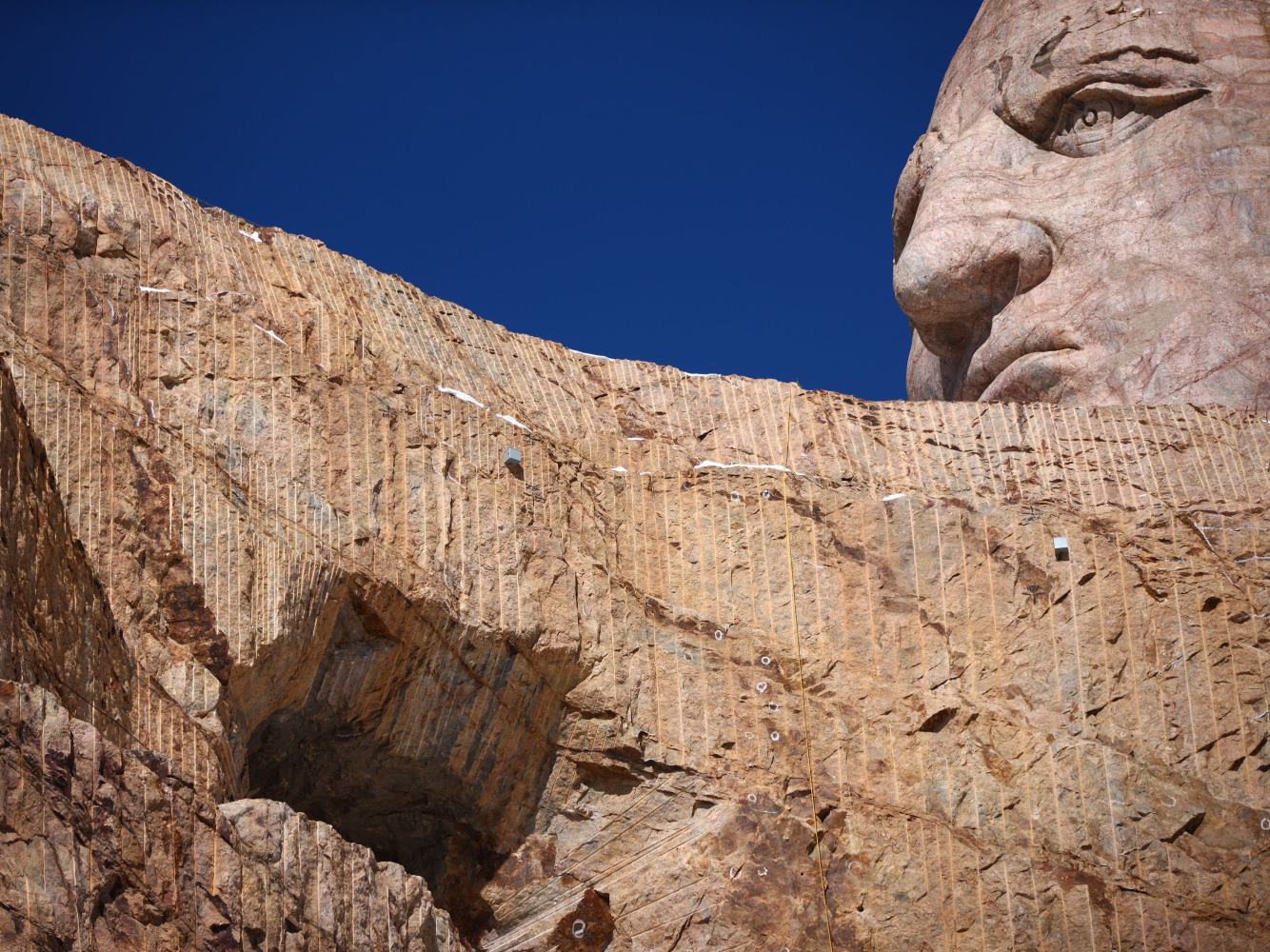
Who Was Crazy Horse? The Enigma of the Plains Warrior
In the vast, sweeping narratives of the American West, few figures loom as large, yet remain as shrouded in mystery, as Crazy Horse. Unlike his contemporaries Sitting Bull, whose visage became iconic through photographs, or Red Cloud, who engaged extensively with the white world, Crazy Horse deliberately avoided the camera and the pen, leaving behind a legacy built on the accounts of those who knew him – friends and foes alike. He was a paradox: a reserved, humble man who possessed an unparalleled ferocity in battle; a spiritual visionary who led his people with pragmatic skill; a defender of tradition who adapted brilliantly to the changing tides of warfare. To understand Crazy Horse is to grasp the spirit of resistance that defined a pivotal, tragic era in American history.
Born sometime around 1840, near Rapid Creek in what is now South Dakota, he was initially known as Tashunka Witco, or "Light Hair" – a nod to his unusually light, wavy hair, a rarity among the Lakota. His father, also named Crazy Horse, was an Oglala Lakota medicine man, and his mother was a Brule Lakota. From an early age, it was clear that the young Light Hair was different. He was quiet, introspective, and often solitary, preferring to observe rather than speak. Yet, beneath this placid exterior lay a profound spiritual connection to the land and a burgeoning courage.

His formative years were steeped in the Lakota way of life – a nomadic existence centered around the buffalo, spiritual ceremonies, and a deep respect for nature. He witnessed the increasing encroachment of white settlers, the breaking of treaties, and the relentless pressure on his people’s traditional hunting grounds. These experiences, combined with a powerful vision quest in his youth, forged the warrior he would become. In this vision, a horse and rider emerged from a lake, untouched by arrows or bullets, bearing a single red hawk feather in its hair. The rider wore a hailstorm painted on his body, and lightning bolts on his face. This vision, interpreted by his father, foretold that the young man would be invincible in battle, provided he never took scalps or possessions from fallen enemies, and never wore his hair tied up. After performing bravely in a battle against the Arapaho, his father bestowed upon him his own name, "Crazy Horse," signifying his unique spiritual power and his connection to the wild, untamed spirit of the horse.
Crazy Horse’s prowess as a warrior quickly became legendary. He was not just brave; he was a tactical genius. Unlike many war leaders who directed from the rear, Crazy Horse led from the front, often charging headlong into the thickest of fights. He was known for his calm demeanor under fire, his ability to inspire his men, and his uncanny knack for anticipating enemy movements. His tactics often involved feigned retreats, flanking maneuvers, and lightning-fast attacks that bewildered and demoralized his opponents.
His reputation soared during the Plains Wars, a period of escalating conflict between the Lakota, Cheyenne, and Arapaho peoples and the encroaching United States Army. He played a significant role in the Fetterman Fight in 1866, a decisive Lakota victory where Captain William J. Fetterman and his entire command of 80 men were annihilated. Crazy Horse lured Fetterman’s troops into an ambush, showcasing his strategic brilliance. A year later, he was again instrumental in the Wagon Box Fight, where a small group of soldiers, armed with new breech-loading rifles, repelled a large Lakota and Cheyenne force, but Crazy Horse’s leadership and tenacity were still evident.
However, it was the summer of 1876 that cemented his place in history. As the U.S. government pressured the Lakota and Cheyenne to abandon their lands and move to reservations, Crazy Horse refused. He joined forces with Sitting Bull, another revered Lakota leader, and rallied thousands of warriors for what would become the last great stand of the Plains tribes. At the Battle of the Rosebud in June 1876, Crazy Horse led a pre-emptive attack on General George Crook’s column, preventing them from joining forces with General George Armstrong Custer. This strategic victory, though not a complete rout, weakened the American forces and set the stage for the most famous engagement of the Plains Wars.
Just days later, on June 25, 1876, the Lakota and Cheyenne encampment along the Little Bighorn River was attacked by Custer’s 7th Cavalry. What transpired became known as the Battle of Little Bighorn, or to the Lakota, the Battle of the Greasy Grass. While Sitting Bull’s spiritual guidance brought the tribes together, it was Crazy Horse’s tactical brilliance that annihilated Custer and five companies of his regiment. Accounts from survivors and participants describe Crazy Horse leading multiple charges, his distinctive war paint (hailstones and lightning) a fearsome sight, his calm presence a rallying point for his warriors. He rode fearlessly, seemingly impervious to bullets, embodying the vision of his youth. The victory was total, a stunning defeat for the U.S. Army, and a momentary triumph for the Lakota way of life.
Yet, beyond the battlefield, Crazy Horse was a man of profound character. He was famously quiet and humble, often described as aloof even by his own people. "Crazy Horse was a strange man," recalled He Dog, an Oglala Lakota chief. "He was quiet, never spoke unless he had something to say, and then he spoke to the point." This introspection was often mistaken for arrogance by outsiders, but among his people, it was seen as a mark of deep thought and spiritual power. He had no interest in personal glory or material wealth. He never sought to become a chief in the conventional sense, preferring to lead through example and action. He famously refused to sit for photographs, believing it would steal his spirit. This deliberate avoidance of the lens has only amplified his mystique, making him a true ghost in the historical machine, known only through the eyes of others.
His dedication to the traditional Lakota way of life was unwavering. He rejected the "white man’s ways" – their alcohol, their treaties, their settlements. His fight was not just for land, but for the preservation of a culture, a spiritual connection to the earth, and the freedom to live as his ancestors had. "My lands are where my dead lie buried," he is often quoted as saying, encapsulating his deep, ancestral bond to his territory.
Following the Little Bighorn victory, the U.S. Army intensified its campaign. The harsh winter of 1876-77, coupled with relentless pursuit and the decimation of the buffalo herds, took its toll. Starvation and disease weakened the Lakota people. Despite his continued defiance, Crazy Horse recognized the impossible odds. In May 1877, accompanied by his uncle Touch the Clouds and other leaders, he surrendered at Fort Robinson, Nebraska. His surrender was not an act of defeat, but a desperate attempt to save his people from annihilation.

His presence at Fort Robinson immediately caused unease among the military and reservation agents. His very name invoked fear and respect, and his continued popularity among the Lakota was perceived as a threat. Rumors, misunderstandings, and deliberate misinformation fueled suspicion that he planned to escape and resume fighting. On September 5, 1877, Crazy Horse was ordered to meet with the fort commander. Believing he was being taken to talk, he was instead led towards the guardhouse. Sensing a trap, he resisted. Accounts vary, but during the struggle, he was fatally bayoneted by a soldier. He died later that night, at the age of approximately 37, with his father by his side.
His last words, according to some accounts, were a plea for his father to bury him where the white man could never find him. His wishes were honored. His parents carried his body away from Fort Robinson, and his final resting place remains a closely guarded secret, known only to a few descendants. This secret burial further cements his enigmatic legacy, ensuring that his spirit, like his physical remains, remains forever untamed and beyond the grasp of those who sought to control him.
Crazy Horse remains an enduring symbol of resistance, courage, and the tragic consequences of westward expansion. He embodies the spirit of a people who fought fiercely for their land, their culture, and their way of life against overwhelming odds. His story is a poignant reminder of the sacrifices made and the losses endured during a pivotal period in American history. Though no photograph exists to capture his gaze, his image is etched in the collective memory of the Lakota people and in the annals of American lore – a quiet warrior, a spiritual leader, and an unyielding defender of freedom, whose legacy continues to inspire and resonate across generations. He was, and remains, the ghost warrior of the Plains, forever riding free.


